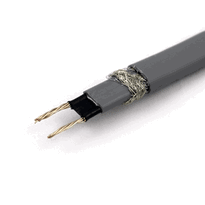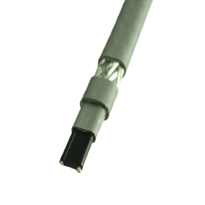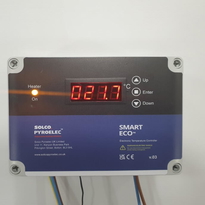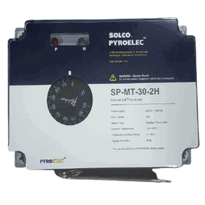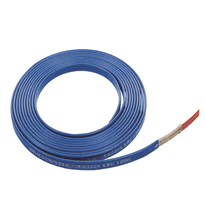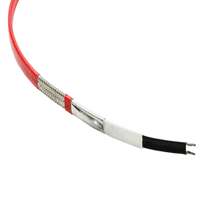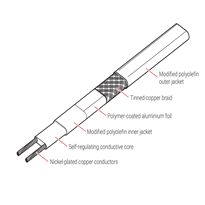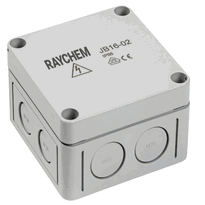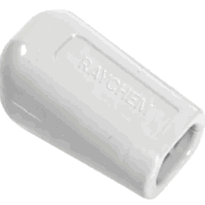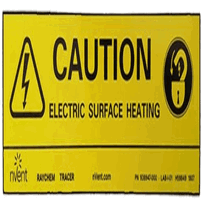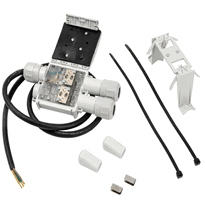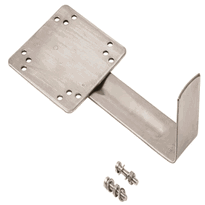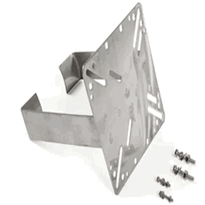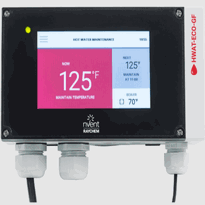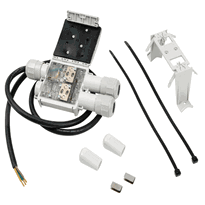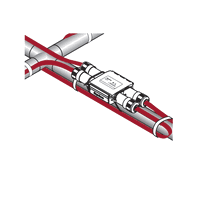Freeze Protection Heating Cable
Freeze protection heating cables are specialised electrical devices designed to prevent pipes, gutters or tanks from freezing by providing controlled heat. There are different types, including self-regulating cables that adjust their output based on ambient temperature, enabling energy efficiency and safety, and constant wattage cables offering steady heat. Proper installation involves secure attachment, appropriate insulation, and adherence to safety guidelines. Understanding these options helps ensure ideal performance; continuing this exploration reveals more detailed considerations for selecting and implementing these cables effectively.
Types and Features of Freeze Protection Cables
Understanding the Different Types of Freeze Protection Heating Cables
Selecting the appropriate freeze protection heating cable is crucial for ensuring reliable and efficient operation in various applications. Each type offers unique features that influence performance, energy consumption, and longevity, making it essential to match the right solution to your specific needs.
Self-Regulating Cables
Self-regulating cables adjust their power output based on the ambient temperature. This characteristic allows them to conserve energy by reducing heat where it isn't needed, making them highly suitable for applications with variable environmental conditions. Their adaptability helps prevent overheating and reduces operational costs.
Additionally, self-regulating cables maintain effective freeze protection across diverse settings by dynamically responding to temperature fluctuations.
Series Resistance Cables
Series resistance cables provide a fixed wattage throughout their length, ensuring a consistent heat output regardless of changes in the environment. These cables are ideal for maintaining stable temperatures in applications where conditions are relatively uniform.
Their straightforward design offers reliable, predictable performance, making them a dependable choice for consistent freeze prevention.
Power-Limiting Cables
Power-limiting cables deliver a controlled, adjustable wattage output. This feature enables precise regulation of heat output, effectively preventing overheating even if the installation isn't perfectly executed.
They're particularly useful in situations requiring customised heating solutions and where safety and energy efficiency are top priorities.
Mineral-Insulated (MI) Cables
Mineral-insulated cables are renowned for their exceptional durability and ability to withstand extreme temperatures and harsh environments. Constructed with a copper core and silica-based insulation, they offer high resistance to physical damage and chemical attack.
These qualities make them especially suitable for industrial applications demanding long-lasting and reliable freeze protection.
Prefabricated Cables
Prefabricated cables are manufactured in designated lengths—up to approximately 12,000 metres—allowing for seamless long pipe runs without the need for multiple joints.
This ensures continuous, effective freeze protection in large-scale or remote installations. Their reliability and ease of installation make them an efficient choice for complex or extensive systems.
Applications and Installation Techniques
Where and how freeze protection heating cables are used significantly influence their installation methods and effectiveness. These cables are applied in various settings, such as water supply pipes, industrial process lines, roof gutters, outdoor tanks, and agricultural systems, where freezing presents a risk. Proper placement involves installing the cable directly on the surface needing protection, typically on the lower or "coldest" side of pipes, with secure attachment using fibre glass or aluminium tape, avoiding improper materials like duct tape. Ensuring proper contact between the cable and the surface is vital for efficient heat transfer, and selecting appropriate fastening methods is key to maintaining consistent contact. For small pipes, run the cable along the lower half at specific positions; larger pipes benefit from spiral wrapping. Additional considerations include wrapping around valves and fittings. Placing thermostats at the coldest points helps in monitoring and maintaining effective heating. Incorporating insulation is essential to improve efficiency and prevent surface damage, especially when used in conjunction with water-resistant insulation materials like rockwool pipe insulation.
Advantages of Self-Regulating Heating Cables
Self-regulating heating cables provide numerous advantages by intelligently adjusting their heat output based on ambient temperature fluctuations. They increase their heat generation during colder conditions and reduce it as temperatures rise, resulting in improved energy efficiency. This automatic power regulation helps minimise electricity consumption compared to constant wattage systems, leading to lower utility bills whilst supporting sustainability objectives. This feature is made possible by a conductive polymer core that responds to temperature changes, adjusting the electrical resistance accordingly. Equipped with temperature-sensitive components, these cables help prevent overheating, thereby reducing fire risks and enabling safe installation in overlapping configurations. Additionally, they protect nearby materials from heat damage, ensuring reliable performance in a variety of environments. Their robust construction allows them to withstand demanding conditions, which reduces maintenance costs and extends their operational lifespan. Installation is straightforward as self-regulating cables don't require external controllers. They deliver consistent and reliable performance across numerous applications, including pipe freeze protection and roof de-icing. Thanks to their energy-efficient operation, they align with environmentally responsible building practices and can help reduce greenhouse gas emissions.
Safety Guidelines and Electrical Considerations
Ensuring safety when inspecting and maintaining freeze protection heating cables requires strict adherence to specific procedures to prevent electrical hazards and fire risks. Inspections should be carried out annually before the onset of winter, with the cables unplugged to avoid the risk of electric shock. Self-regulating heating cables are designed to adjust their heat output automatically, but improper inspection can compromise their safety features. Visual inspections are essential. Look for cracked, charred insulation or exposed wires, which should prompt immediate replacement. Overlapping heating cables are generally not permitted unless explicitly authorised by the manufacturer. Proper installation involves securely fixing the cables directly onto pipes using approved attachments, avoiding wrapping over insulation unless non-flammable materials are utilised. Electrical safety is paramount. Utilise grounded heating cables connected to GFCI-protected outlets, and avoid continuous operation unless the cables are specifically designed for it. Regularly checking these safety measures significantly reduces the risk of electrical failures and fire hazards. Additionally, making use of advanced insulation materials can improve energy efficiency and safety during operation. Following these standards ensures that freeze protection remains safe, reliable, and effective during the cold months.
Selecting the Right Cable for Your Environment
Selecting the right heating cable for your environment requires careful consideration of the specific conditions and application needs. Different types of cables are engineered to perform optimally under various circumstances, ensuring safety, efficiency, and longevity.
Self-regulating cables are particularly suitable for environments with fluctuating temperatures or complex layouts. They adapt their heat output dynamically, making them ideal for roof de-icing, pipe freeze protection, and applications where precise temperature control is necessary. Their ability to respond to temperature changes reduces energy consumption and minimises the risk of overheating. Self-regulating cables adjust their heat output based on ambient temperature, enhancing energy efficiency and safety. Additionally, their design features often include rugged jackets that withstand harsh outdoor conditions.
Constant wattage cables provide a steady level of heat and are best employed in straightforward applications such as floor heating or snow melting. While they offer consistent performance, they generally require external thermostat controls to maintain desired temperature levels. Their simplicity makes them a reliable choice for controlled heating needs.
Power-limiting cables, which incorporate Positive Temperature Coefficient (PTC) materials, are designed for use in hazardous areas subject to strict safety standards. They limit their maximum power output, providing an extra level of safety against overheating and electrical faults. This feature makes them suitable for industrial environments and areas where safety is paramount.
Another important factor when selecting a heating cable is environmental exposure. Moisture, physical wear, and chemical exposure influence the choice of jacket and insulation materials. For outdoor or damp environments, cables with robust, moisture-resistant jackets are essential to prevent degradation and ensure consistent performance.
Matching the appropriate cable type to the environment ensures optimal performance, safety, and durability of your heating system.
Consider the specific application, environmental conditions, safety requirements, and operational efficiency when making your selection.
Key considerations include:
- Compatibility with complex geometries and overlapping needs
- Providing consistent heat output for precise applications
- Meeting safety standards and resisting environmental factors
- Maintaining energy efficiency and managing power consumption
- Facilitating ease of installation and integration with existing infrastructure
Conclusion
Choosing the appropriate freeze protection heating cable involves understanding its types, applications, and safety protocols. Proper installation, based on detailed knowledge of cable features and environmental conditions, ensures reliable operation and safety. Self-regulating cables offer energy efficiency and adaptability, making them suitable for diverse settings. Adherence to electrical standards and manufacturer guidelines minimises risks and maximises longevity. Overall, informed selection and precise installation are critical for effective freeze protection, safeguarding infrastructure, and maintaining operational continuity in cold environments.








